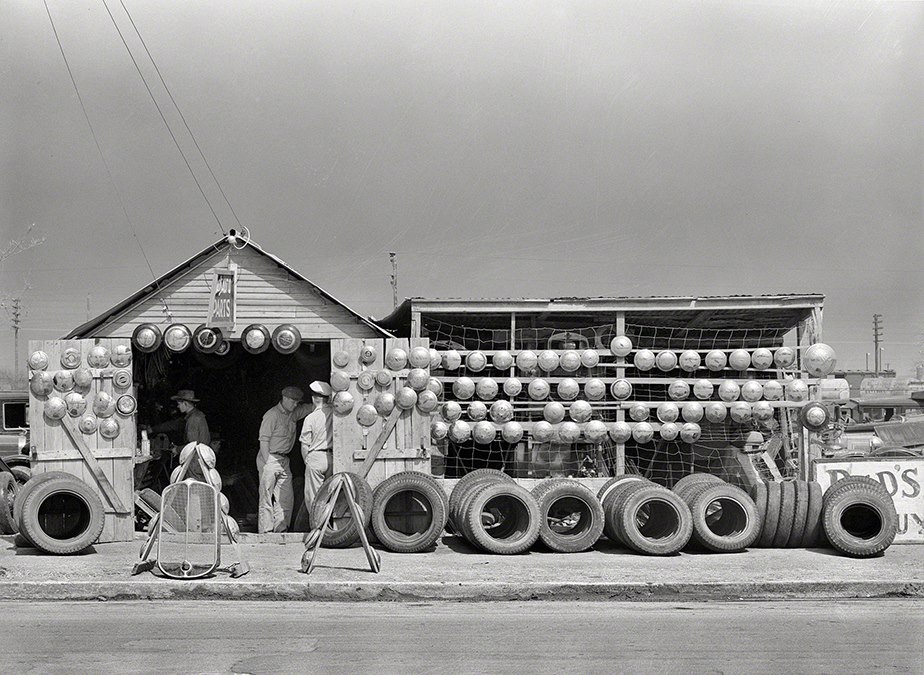Posted on 11/10/2016

Every year, about 290 million tires are discarded; of those, about 233 million are recycled in one way or another. Shredded tires can be used for playground surfaces, welcome mats, hot-melt asphalt, bark mulch and even made into building material for “green” construction.But what can you do with your old tires? Here are some ideas:--Fill a tractor tire with sand to make a great sandbox for kids--Hang a tire from a rope as a tire swing--Stack a couple of tires on top of each other, bolt them together and paint them a cheerful color, then use them as a planter--Lay two rows of tires next to each other, somewhat staggered, and use them for broken-field running as part of football conditioning--Bolt two tires together, then affix a round glass top for an instant patio table--Tires can be hung or slightly embedded in the ground and used as planters (note: don’t grow vegetable plants in tires)--With a little imagination and some other building materials, you can u ... read more
Posted on 10/27/2016

Ever think about all the different vehicles that use rubber tires? Tractors, industrial equipment, everything else that rolls on rubber? Each specialized type of tire requires a specialized design for its specific purpose. Aircraft tires, for instance, have to be very robust and handle a great deal of weight and stress, but for only a short period of time. Aircraft tires are often filled with an inert gas such as nitrogen, for more stable inflation levels, and are designed with specialized fusible plugs which provide a safer failure mode (rather than a sudden, catastrophic tire explosion). Off-the-road tires, for vehicles such as graders or mining equipment, operate at low speeds but have to be able to withstand severe service conditions while handling heavy loads. They’re designed with tough, thick carcasses to resist cuts, tears, gouges and punctures while still providing decent control and ride quality for the operator. Agricultural tires are designed for good traction ... read more
Posted on 9/29/2016

Believe it or not, many new vehicles come without a spare tire. Manufacturers have a few different reasons for that, including weight savings, space efficiency, and cost. When you're stuck by the side of the road, though, none of that really matters much, does it? Instead, these vehicles come equipped with an inflation kit and/or a can of sealant. Sealant is a gooey substance in an aerosol can that's designed to coat the inside of the tire due to centrifugal force once you get rolling again, hopefully sealing the puncture. These products, such as Fix-A-Flat, have been on the market for decades and tend to work pretty well on a minor puncture. They're not a permanent fix, however. Your speed should be limited after using Fix-A-Flat type products, and you should see about getting the tire repaired or replaced as soon as possible. In addition, most of these products freeze at temperatures below 32 degrees and may not be usable in cold weather. The other alternative on new v ... read more
Posted on 8/25/2016

There are so many tire designs on the road -- all-season, high performance, touring, light truck -- and even within a specific tire design, there may be several choices of tread patterns. What differentiates them, and what are the pros and cons of each tread design? -- Directional tread has a pattern of grooves and chevron shapes, all pointed in one direction. This design makes it easy to direct water away from the tire's contact patch and prevent hydroplaning in wet weather, and also offers low noise and great road manners. The directional design means tires can only be rotated front-to-rear and not side-to-side or diagonally. -- Symmetrical tread patterns feature grooves or herringbone designs that are extremely uniform across the tire's tread face. Symmetrical designs are popular for touring tires due to their quiet ride, long wear and ease of rotation, making them a very versatile tread pattern. -- Asymmetrical tread patterns are a bit of a c ... read more
Posted on 7/28/2016

The tire is such a commonplace item -- it's on every car, every truck, every bicycle, every aircraft. It's easy to not give the tire a second thought, but like every other technology, the tire has an interesting history of advances and failures. In the 19th century, carriages and wagons used steel strips for "tires" on their wheels, with the punishing sort of ride that you'd expect. In later years, they were shod with strips of natural rubber, which was an improvement but was still problematic. Solid rubber still rode pretty rough, and the natural, uncured rubber would get gummy in hot weather and shrink and harden in cold temperatures. Charles Goodyear was able to help with the invention of vulcanized rubber, but the modern tire was still several years off. By the 1880s, the bicycle was becoming much more popular, and in 1888 Scottish engineer John Dunlop was watching his son struggle with the bone-shaking ride of his tricycle. He then devised the first-ever air-filled ... read more